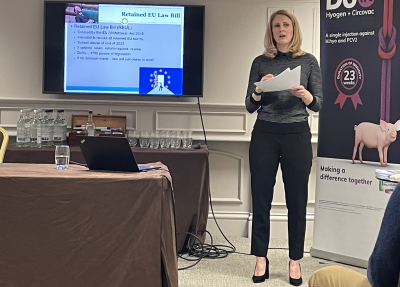Government to develop harmonised emissions calculator, as retail interest in farm carbon emissions grows
11th Apr 2023 / By Alistair Driver
The Government has announced a commitment to develop a new harmonised approach for measuring on farm emissions.
The announcement, from the government’s Net Zero Growth Plan and Nature Markets follows a call for evidence on the role of robust monitoring, reporting and verification of greenhouse gas emissions on farms.
While there are already numerous tools on the market for farmers to assess their emissions, inconsistency in the results has led to low confidence from industry and low uptake.
By developing a harmonised methodology and setting out by 2024 how farmers will be supported to measure their emissions, Defra said it can help the agricultural sector reduce emissions across the supply chain – including from livestock, nutrient management, and farm equipment.
Farming Minister Mark Spencer said: “As well as producing food for our tables, farmers and land managers can play a key role in helping the UK achieve net zero.
“We’ve been listening to the farming sector, and the measures announced today will not only help them to calculate their carbon footprint, but also open up new financial opportunities, such as combining private commercial opportunities with our new farming schemes support.”
Interest in carbon footprint
 Speaking at the NPA Spring Regional meetings, NPA chief executive Lizzie Wilson told members retailers are becoming more focused on on-farm carbon footprints. They are trying to deliver on their Scope 3 commitments, their indirect emissions, including farms, she explained.
Speaking at the NPA Spring Regional meetings, NPA chief executive Lizzie Wilson told members retailers are becoming more focused on on-farm carbon footprints. They are trying to deliver on their Scope 3 commitments, their indirect emissions, including farms, she explained.
“There are lots of carbon calculators available,” Lizzie said. “We get asked quite regularly which is the best one - but it is about which is the best one for you and your business and also which one your supplier or customer is asking of you.
“You need to do some homework to find which one you are most comfortable with. There are lots of resources from NFU and AHDB to give you a bit of a start.
“Once you have churned out that figure, that is your benchmark. You can use your carbon calculator to identify hotspots, make improvements and put together a plan of action. Once retailers ask for this, they are going to want to see some sort of demonstrable progress.”
In terms of what pig producers should be focusing on to reduce their carbon footprint, she highlighted improving efficiency in pig production, particularly feed conversion, and focusing on where feed is sourced from.
“We're heading very quickly towards sustainably sourced soya and more and more producers are starting to use substitutes, for example growing peas and beans, for protein,” Lizzie said, adding that renewable energy and locking up carbon via trees and hedgerows can also contribute.
“We do have a really good story to tell us – we just don't have a lot of data, so the more producers can shout about it, the better,” she added.